NORTH WALES COAST RAILWAY:NOTICE BOARD
Rheilffordd arfordir gogledd Cymru: Hysbysfwrdd
19 April 2021






Forthcoming events
(see also our Calendar page for venues)
Note: we have removed all entries relating to meetings as the events are cancelled.
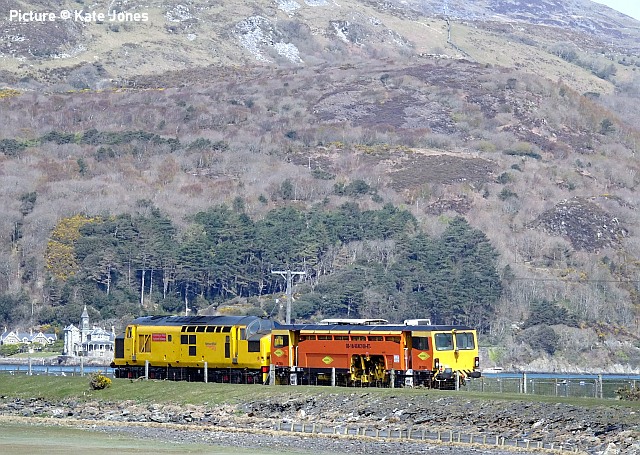
97 302 Ffestiniog & Welsh Highland Railways / Rheilffyrdd Ffestiniog ac Eryri escorts aa Tamper bound for Barmouth on the approach to the viaduct, 16 April. Picture by Kate Jones.
A look at the future - Class 197
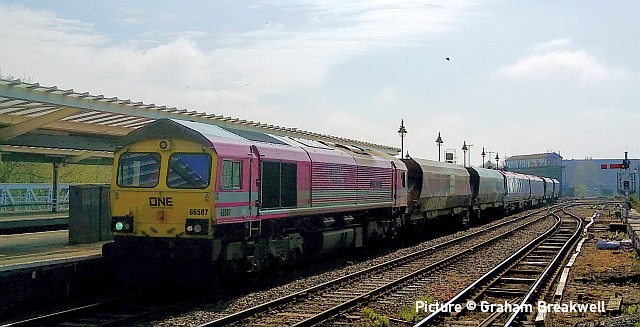
Shrewsbury on 14 April, and Freightliner loco 66 587 As One We Can passes Graham Breakwell's camera position at Shrewsbury station with what appears to be a short train of hopper wagons ...
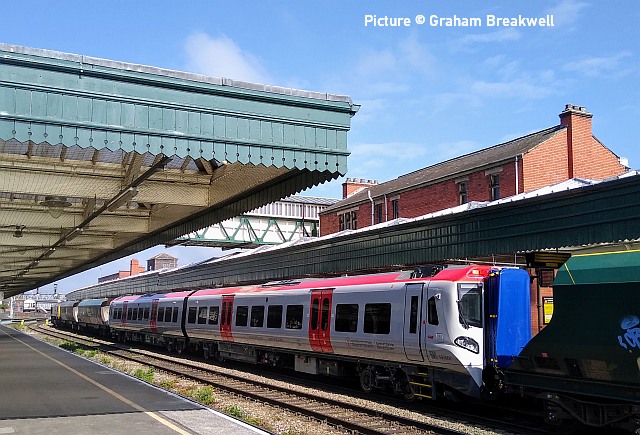
... but the hopper wagons are only there for braking purposes, the payload is 197 001, the first of a fleet of 77 diesel multiple units on order from CAF for Transport for Wales, on its way from store at Donnington to Crewe where it will be based for test running, which will be on the North Wales Coast line. They will be assembled at CAF's works in Newport.
These units, a mixture of 51 two-car and 26 three-car sets, will eventually replace all TfW's class 175 and 158 units. Some of the 2-car sets will be equipped for the ERTMS signalling on the Cambrian network, and 14 of the 3-car uits will have first-class sections, for long-distance services. Technically they are similar to the Class 195s, although unlike the 195s fitted with gangway connections. TfW plan to bring the frst unit into service in spring 2022; projects move slowly on our railways.
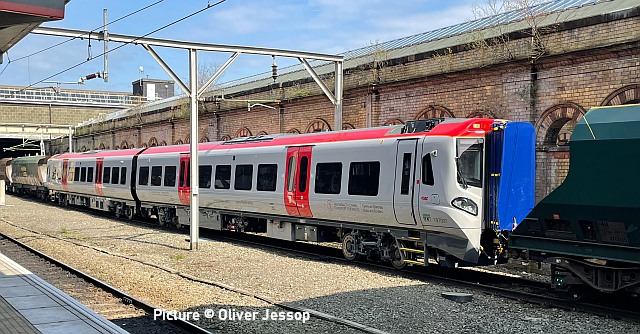
Arrived at Crewe (Oliver Jessop).
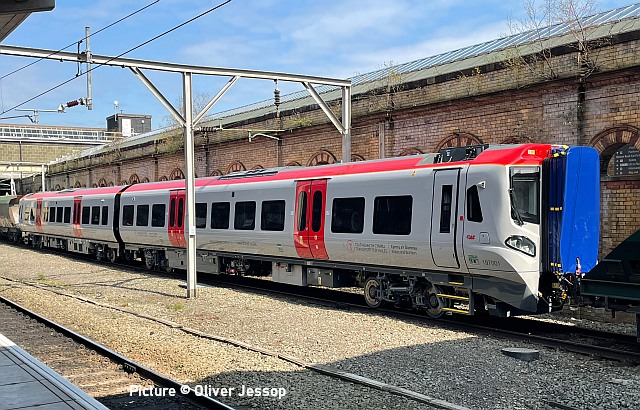
Apart from the Avanti London trains and the small fleets of Class 230s and Loco-hauled sets, travellers in North and Mid-Wales will be travelling in these trains on both main and secondary services for a long time ahead.
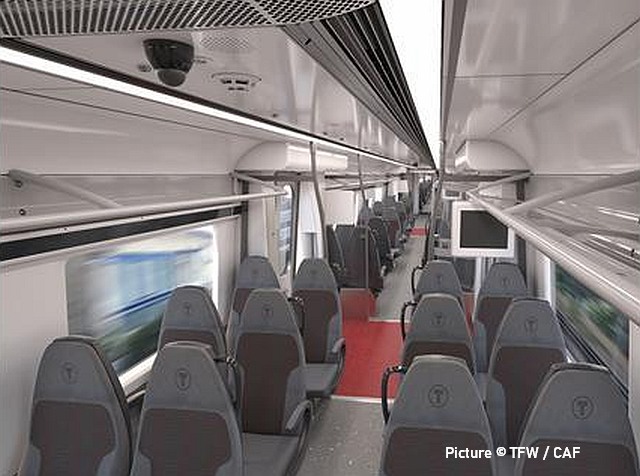
The design of the new trains has created some controversy. The 158s and 175s, designed for long distance work, have doors at the carriage ends, while the 197s have then at the one-third and two-thirds positions which some think is better for suburban-style journeys.
Curiously, TransPennine in their new fleets have gone in the opposite direction, when replacing the 185s. TfW have reportedly spent extra money on seats (the artist's impression above may be the the original design) after complaints about the type installed in some new trains in the London area; toilets are also a worry, as the 2-car sets will have just one toilet per set compared to two on the existing 158s and 175s. (Northern's 195s have one toilet even in the four-car version.)
Magazine Watch
The latest issues of two national rail magazines contain items of interest. Modern Railways has a feature on the new Transport for Wales rolling stock, and in Today's Railways UK there is a survey by Andy Flowers of loco-haulage on the North Wales Coast over the years.
News pictures
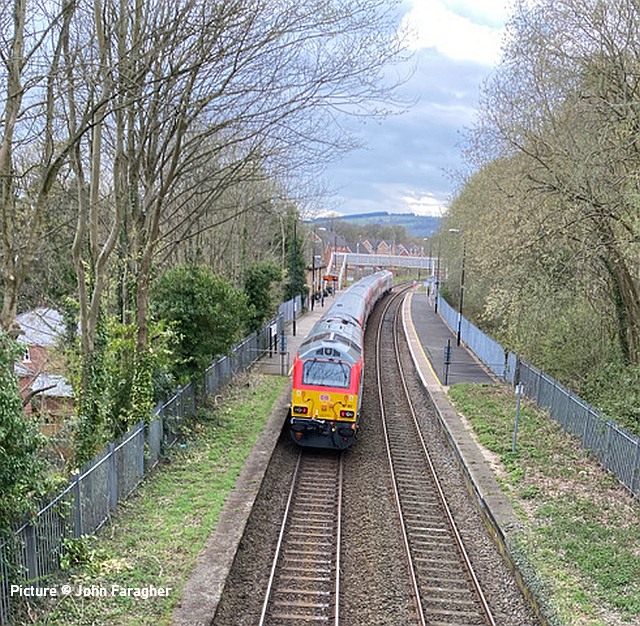
John Faragher writes: "On 13th April 67 017 is propelling a rake of mk 4 carriages southbound after a brief stop at Ruabon Station on an empty coaching stock move/training run from Wrexham General to Cardiff Canton Sidings. The train had travelled from Cardiff to Wrexham, passing Ruabon approximately 90 minutes earlier.
"The mature trees to the right of the fencing on the northbound platform mark the site of the bay platform for services from Ruabon to the coast via Llangollen, Bala Junction and Dolgellau. Notice also the unused length of the platforms. Like so many stations Ruabon is a pale shadow of what it was in its heyday."

37 219 wearing its portable track recording device passes Bache on 14 April. Picture by Bob Greenhalgh, who notes: 'I started chasing 37 219 using Real Time Trains as a guide. Sadly, for the first 2 hours it either didn't turn up where expected, ran early so as I missed it or ran to time and I missed it! Finally caught it at Bache."
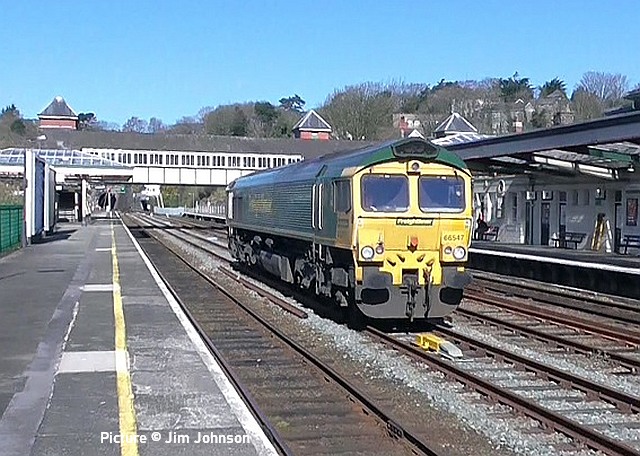
GBRf (list issue) are not the only company making route-learning forays along the Coast - Freightliner are also at it, using one of their own locos. 66 547 was pictured heading west through Bangor towards Holyhead on 14 April ...
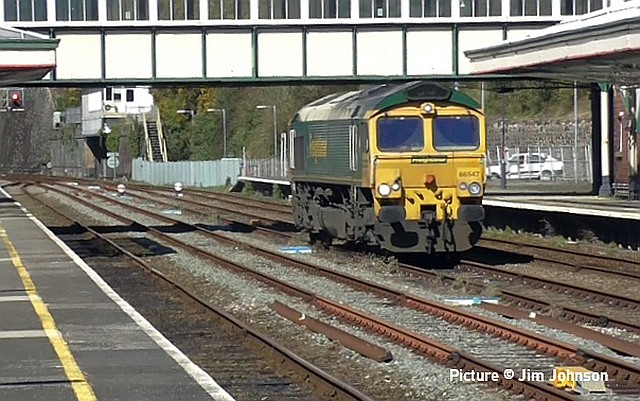
... and returning to Crewe 69 minutes later (Jim Johnson). We understand this is also in connection with a Penmaenmawr quarry contract, trains will run to Freightliner's base at Guide Bridge.
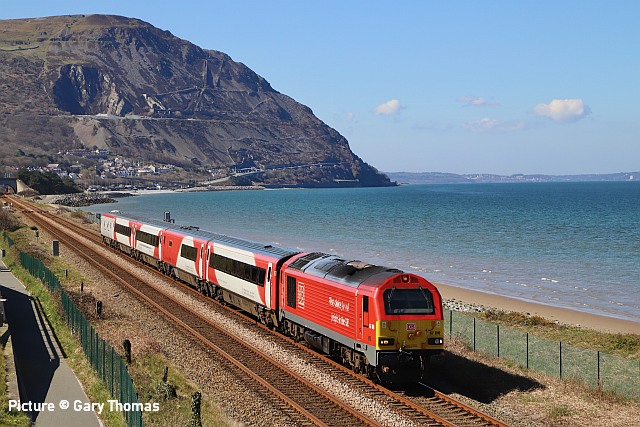
In beautiful weather on 15 April, 67 010 leads a Holyhead to Crewe training run past Dwygyfylchi ...
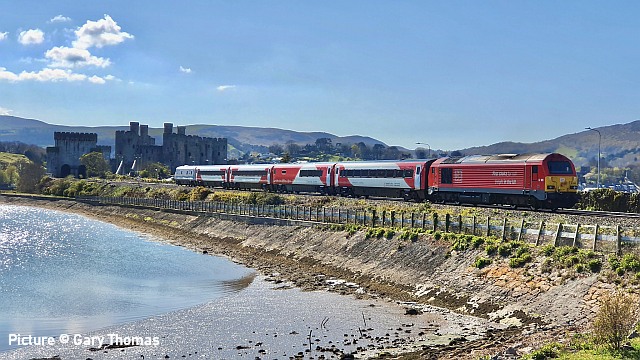
... and returning across Conwy Cob (Gary Thomas).
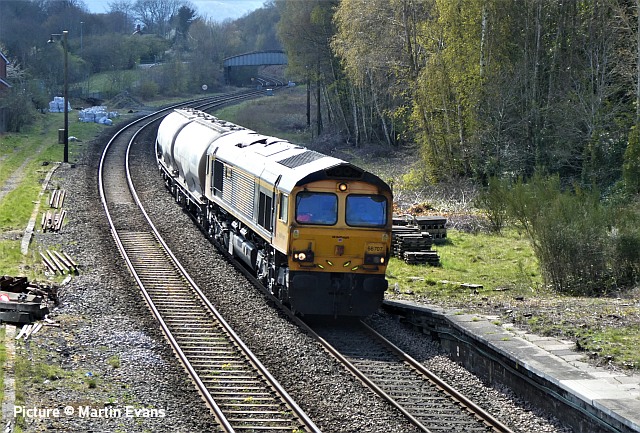
Ruabon on 16 April: 66 707 with very short short train of empty cement tanks from Avonmouh to Penyffordd (Martin Evans)
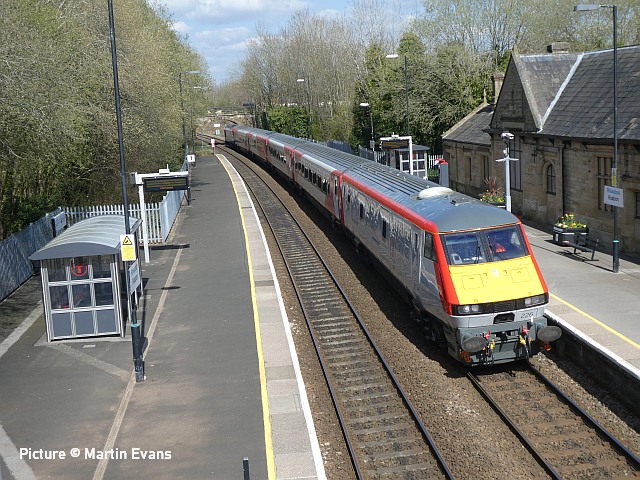
17 April at Ruabon, and a TfW training run from Wrexham to Cardiff: 67 017 propelling (Martin Evans).
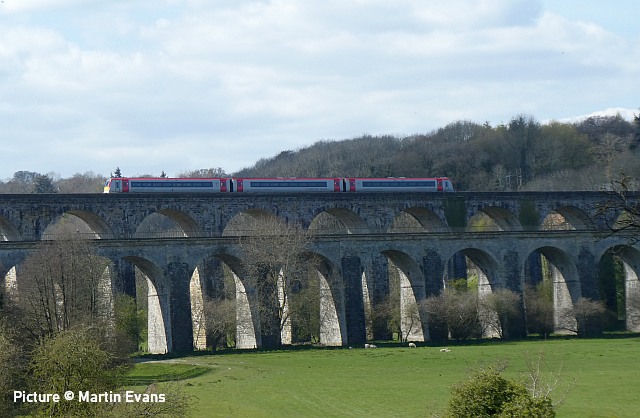
17 April at Chirk Viaduct: the 13:47 Holyhead to Shrewsbury crossing (Martin Evans).
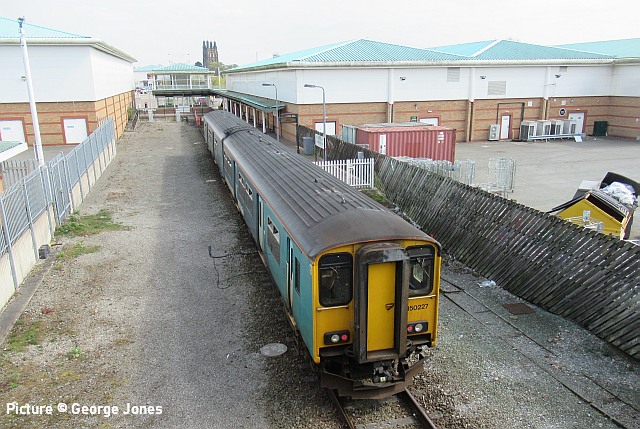
Departure from Wrexham Central on Sunday 18 April, by 150 227 (George Jones). At present, most weekday trains from Bidston are not serving this station, instead terminating at Wrexham General where passengers are advised that Central is only a ten-minute walk away. The train returns to Bidston three minutes later. On Sundays all the the trains that run to go to Central, where there is a longer turn-round time.
Will it be necessary to extend the platform to accept the three-car Class 230s which have been obtained for use on this line?
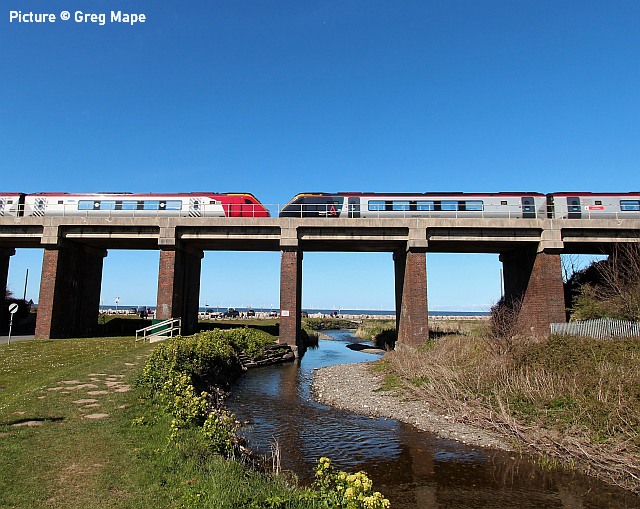
'Voyager' units are starting to appear in the livery of new operator Avanti: above, a comparison with Virgin livery at Llandulas viaduct on 12 April. (Greg Mape).
Llangollen auction
The assets of Llangollen Railway PLC are to 'go under the hammer' at an on-line auction on 12 May ( Full information ) . Fortunately, the steam and main line diesel locos which run on the railway are privately-owned and not affected, but the sale does include ten Mk1 coaches and a Diesel shunter. Most of the lots are works equipment; it will be a great setback if that is dispersed.
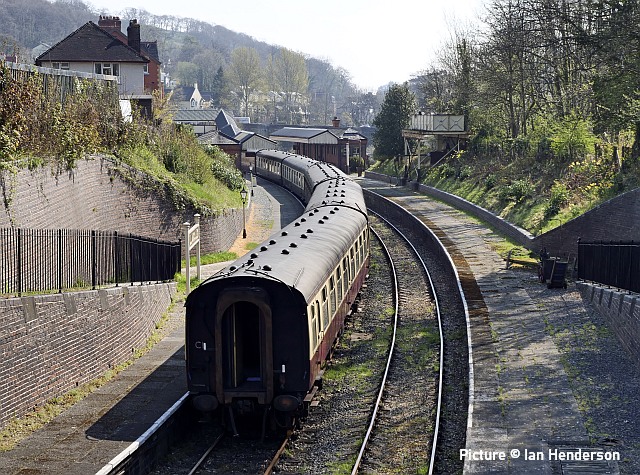
The coaches have been lined-up in Llangollen station for possible inspection by prospective bidders.
From Dave Sallery's Archive
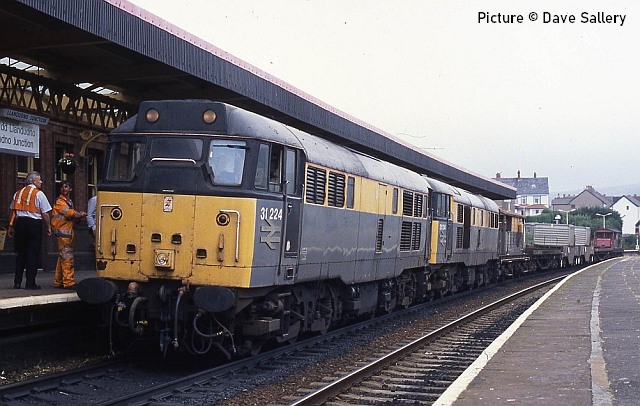
Two 1994 scenes showing the Trawsfynydd nuclear flask train in the formation of the period. Above, 31 224 and 31 134 seen at Llandudno Junction in May 1994. The Coal sector of Railfreight supposedly had a dedicated fleet of 31s for nuclear traffic, yet many of the locos used were actually fom the Engineers' fleet.
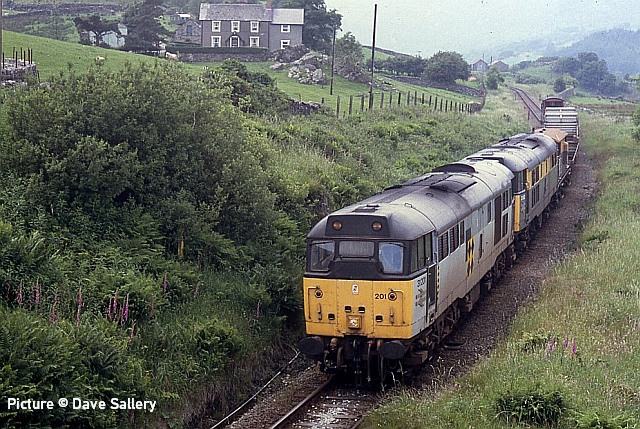
31 201 and 31 163 near Roman-Bridge on 1 January 1994. Another interesting feature seen on both these images is the use of ex-Southern Railway bogie brake vans, 25 of which were built in the 1930s for use on express freight and milk trains. They were used on North Wales flask trains from 5 November 1993 to 22 July 1994; four-wheel brake vans returned until regular traffic to Trawsfynydd ceased in 1995. An explanation we've seen is that the track on the Trawsfynydd section had been renewed and it was thought that the bogie vehicles would ride better until the track settled down. Bogie flat wagons were provided as 'barriers' to protect the staff from any radiation, later, redundant four-wheel HEA hopper wagons, some with bodywork removed, were employed.
The Trawsfynydd train was propelled from the rear beyond Blaenau Ffestiniog, so the guard would ride in the leading brake van to keep an eye on the line ahead. In later years, it was decided that flask trains did not require barrier wagons.
Looking back: Llanberis Lake Railway - with David Pool

Most readers of this website will know that the Llanberis Lake Railway was built on part of the trackbed of the four foot gauge Padarn Railway, ten years after the latter closed in 1961. The new railway has been built to the 1 foot 11.5 inches gauge of most of the quarry railways in North Wales. The Dinorwic quarry had a number of Hunslet locomotives, and others were available from closed quarry systems. In the second year of operation, on 18 June 1972, the train was being worked by Elidir, a Hunslet built in 1889 for the Dinorwic system, and is departing from Gilfach Ddu, the terminus at the time.(above).
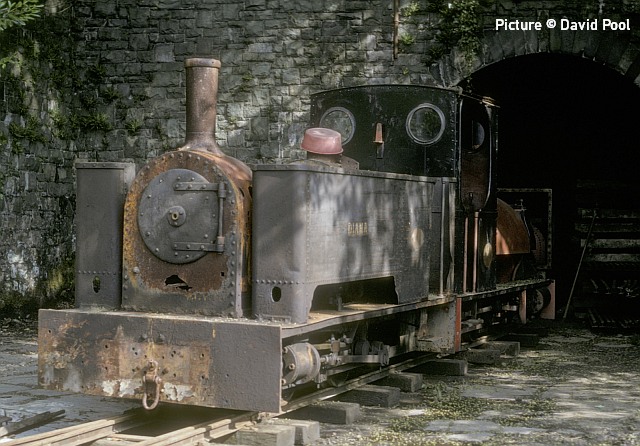
On that day I photographed two rescued locomotives being stored at Gilfach Ddu. The front locomotive was a Kerr Stuart named Diana. I have recently learned it had been built in 1909, but started work in 1917 at the Kerry Tramway, later moving to the Oakeley quarry at Blaenau and finally to the Pen-yr-Orsedd quarry at Nantlle, from where it had been rescued for preservation. It never ran at Llanberis, being moved to the Brecon Mountain Railway and later to the Vale of Rheidol, where restoration was completed in 2015.

I understand it is now on the Amerton Railway, but on 31 July 2016 I photographed it at the superb Steam Gala at Threlkeld in Cumbria.
Mark Hambly writes: The loco is indeed based at Amerton and is owned by Talyllyn driver (amongst his many talents) Phil Mason. Diana even has her own Facebook page.
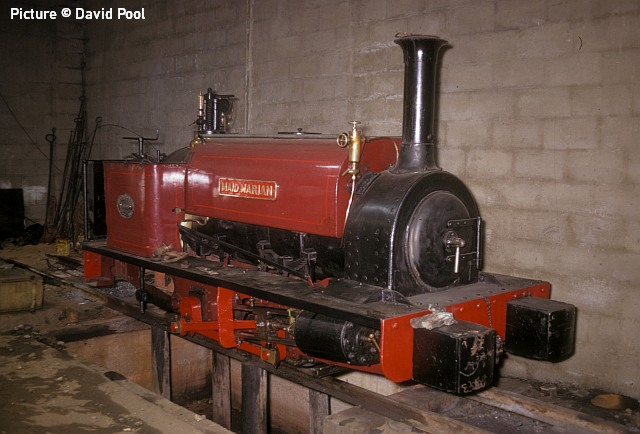
The Hunslet behind Diana has given me a challenge. My first thought was that it was Maid Marian, which was at Llanberis in 1972, but I then found I had photographed Maid Marian at Bressingham in 1970, in Museum condition and without a cab (above).
The Llanberis Railway Guidebook has a photograph of the arrival of Maid Marian in 1971, looking just like it had done in 1970. Dolbadarn was another Hunslet at Llanberis at the time. but this was operational, so it could not have been this. A third Hunslet Wild Aster was a Dinorwic locomotive which had been taken out of service around 1960, so this fitted the location and the condition. Subsequently it has been restored at Llanberis, and now looks very similar to Dolbadarn.
There is one other mystery which needs solving. My 1972 photograph shows a clean black cab with a lamp iron midway between the rear spectacle plate windows. This looks very like the cab at present carried by Maid Marian on the Bala Lake Railway, but different from the cabs currently on Dolbadarn and the restored Wild Aster. Perhaps it was being built for Wild Aster but then transferred to Maid Marian before the latter moved on. Can anyone confirm this suggestion?
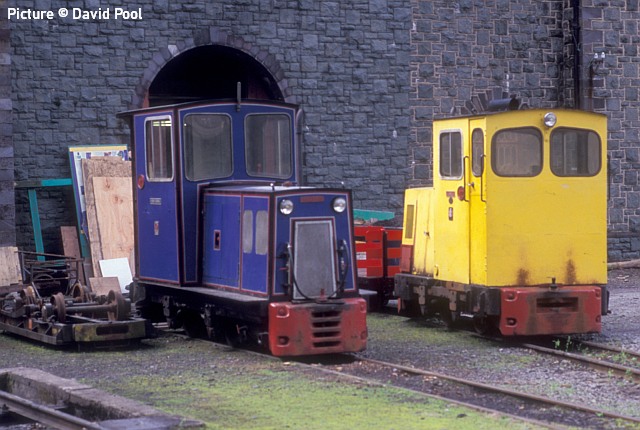
The National Slate Museum of Wales occupies the buildings which were the Engineering Workshops of the Dinorwic quarry. Some narrow gauge diesel locomotives are usually parked outside, since a part of the building is still used for the storage and maintenance of the Llanberis Lake Railway locomotives. The two locomotives on 2 September 2014 were No.7 Topsy and No.19 Llanelli, both built in 1961 by Ruston Hornsby. No.7 came from Bestwood Colliery, and at first was named Coed Gorau, while No.19 was obtained from Thyssen at Llanelli.
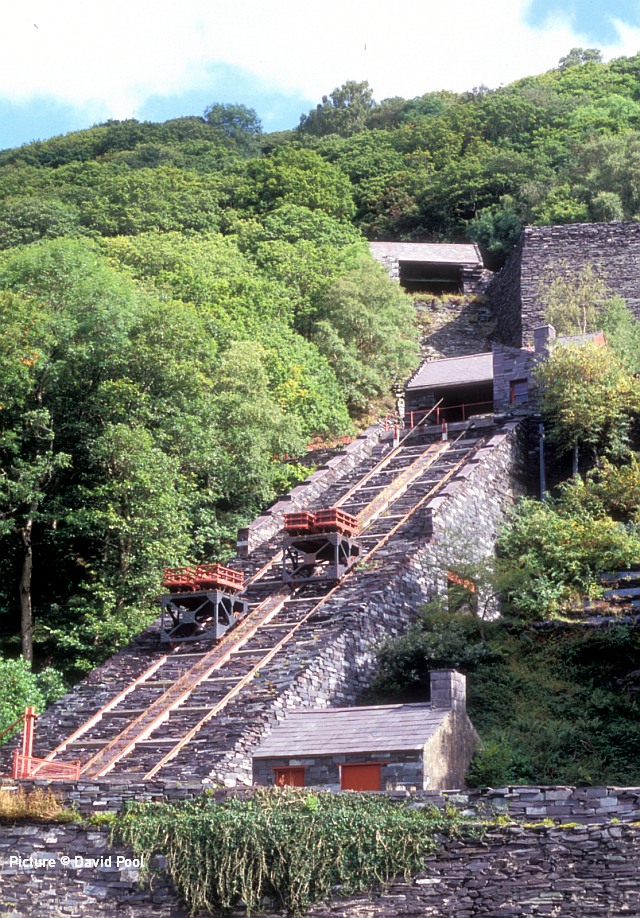
The Vivian Quarry Incline at Gilfach Ddu was restored in 1998, and is cared for by the staff of the National Slate Museum. Demonstration working was provided in 2012, although unfortunately I have never seen it in action. My photograph was taken on 2 September 2014.
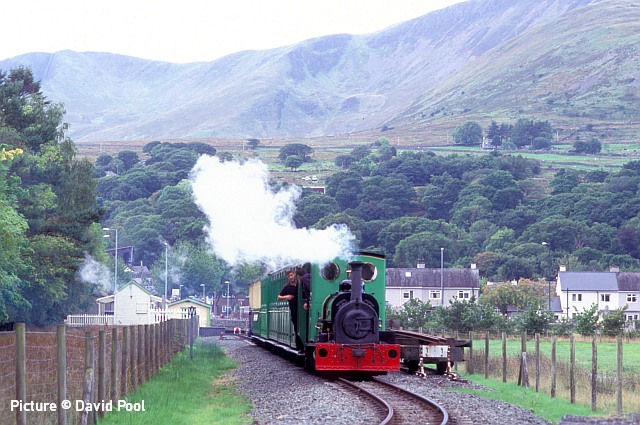
The Llanberis Lake Railway’s main station at Gilfach Ddu is some distance from the more popular tourist areas of Llanberis, so a track extension was opened in 2003 to a new station opposite the Snowdon Mountain Railway terminus. Trains may be boarded at the new station, but Gilfach Ddu remains the hub of the system. Dolbadarn is leaving the new station on 5 September 2018, a telephoto lens being used from outside the fence.
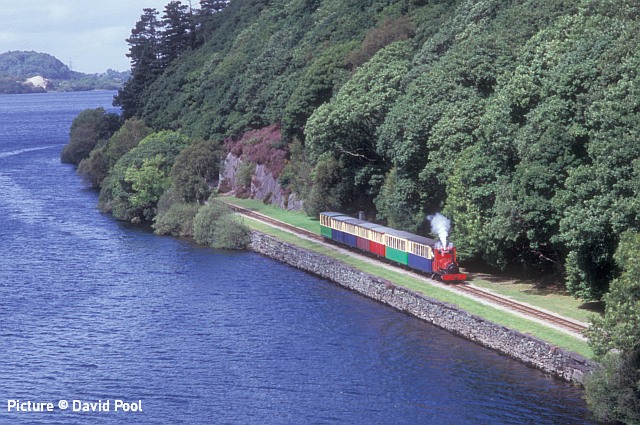
Photography between Gilfach Ddu and the other terminus at Pen Llyn is very difficult, since there are few paths near the line and many overhanging trees, with the sun on the lake side of the line. The view from the path to the Dinorwic Quarry Hospital in Padarn Country Park gives possibly the best shots, especially if the locomotives are running chimney first towards Gilfach Ddu. Elidir was photographed on 17 August 2017.
Rhyl's last goods van - recalled by Peter Neve
The photograph taken by Dave Sallery at Rhyl station on 8 January 1987 (with the goods yard track in the process of being lifted) reminded me of an event which occurred just over a year later. Very, very close examination of Dave’s photograph shows a light grey goods wagon in the background, just to the left of the brick goods shed.
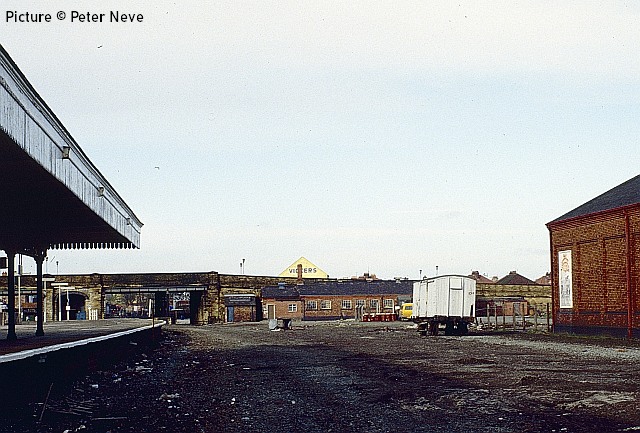
Once all the track had been removed, this wagon was left sitting in the ballast waiting to be cut up.
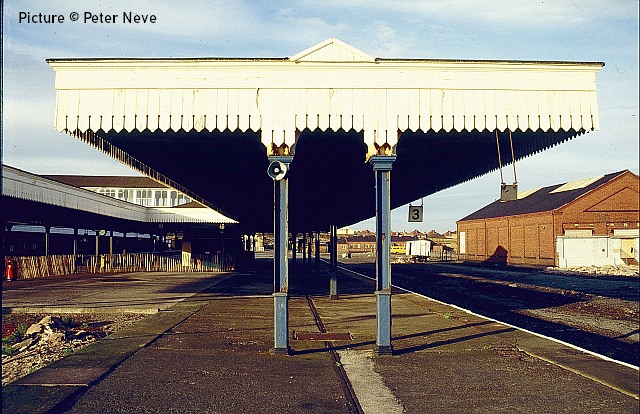
News of this situation reached the Permanent Way team at Llangollen Railway and after some hurried negotiations the team was given permission to rescue the van.
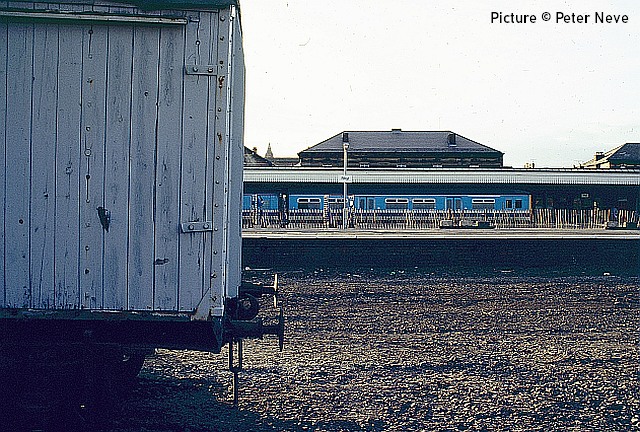
My photographs show the van at Rhyl on the evening of 20 April 1988 in low sunlight conditions ...
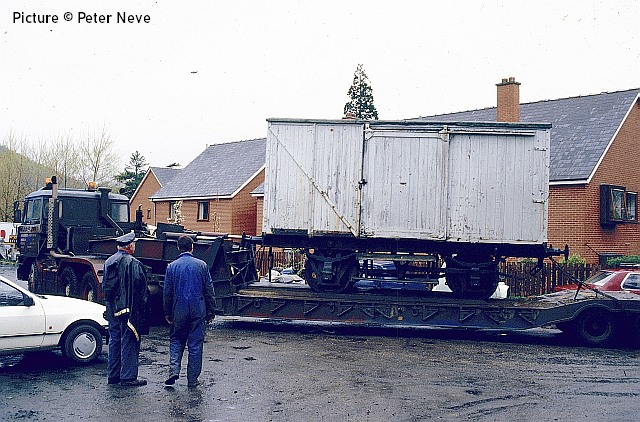
... and then being delivered to the Llangollen Railway the following day.
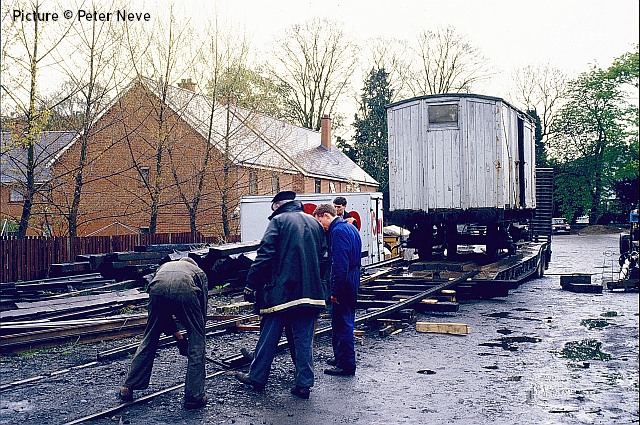
A low loader and road crane were dispatched on the morning of 21 April 1988 and the van was craned on to the low loader and delivered to Llangollen later that day. The ventilated van is believed to be ex-LMS, built in 1926 and is extant on the railway, being used to store equipment.

North Wales Coast home page | Archive | Previous Notice Board